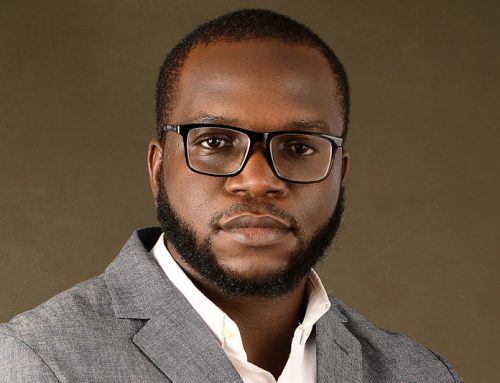 And God Created Women. It was the era of The Pill, the miniskirt, the bikini, Brigitte Bardot, Ursula Andress and the banning of the ANC. In this, the third essay in our series on Women Through the Decades, we look at women in the 1960s and 1970s. She rose from the Caribbean Sea in a white bikini, sporting a diving knife on her hip. It was 1962 and actress Ursula Andress changed the world forever in this defining moment of the first ever Bond movie, Dr. No. The bikini, once banned as ‘sinful’, never looked back. Women on and off screen ran out and bought bikinis, triggering a 1960s craze. Amongst the bikini clad was the sinfully gorgeous Brigitte Bardot who urged women to toss out their bloomers and strut their stuff. Known as ‘the woman who was made to destroy men’, Bardot claimed the spotlight after her role in And God Created Woman, and led the way for women to act instinctively: to be sexual if they felt like it, to eat when they felt like it and to wear a bikini if they felt like it. Along with the bikini came the miniskirt, fronted by designers like Mary Quant in Swinging London, and sported by the new look boy-girl models, Twiggy and Jean Shrimpton (the Shrimp), with their coltish legs and heavily made up eyes. The mini enthusiasts, the Mods and the Hippies were part of the dominant counter culture of the era. They whirled their way through the compelling call of The Rolling Stones, The Beatles, The Who, Bob Dylan, Marianne Faithfull, Janis Joplin and other music masters who defined the soundtrack of the psychedelic sixties and seventies.
And God Created Women. It was the era of The Pill, the miniskirt, the bikini, Brigitte Bardot, Ursula Andress and the banning of the ANC. In this, the third essay in our series on Women Through the Decades, we look at women in the 1960s and 1970s. She rose from the Caribbean Sea in a white bikini, sporting a diving knife on her hip. It was 1962 and actress Ursula Andress changed the world forever in this defining moment of the first ever Bond movie, Dr. No. The bikini, once banned as ‘sinful’, never looked back. Women on and off screen ran out and bought bikinis, triggering a 1960s craze. Amongst the bikini clad was the sinfully gorgeous Brigitte Bardot who urged women to toss out their bloomers and strut their stuff. Known as ‘the woman who was made to destroy men’, Bardot claimed the spotlight after her role in And God Created Woman, and led the way for women to act instinctively: to be sexual if they felt like it, to eat when they felt like it and to wear a bikini if they felt like it. Along with the bikini came the miniskirt, fronted by designers like Mary Quant in Swinging London, and sported by the new look boy-girl models, Twiggy and Jean Shrimpton (the Shrimp), with their coltish legs and heavily made up eyes. The mini enthusiasts, the Mods and the Hippies were part of the dominant counter culture of the era. They whirled their way through the compelling call of The Rolling Stones, The Beatles, The Who, Bob Dylan, Marianne Faithfull, Janis Joplin and other music masters who defined the soundtrack of the psychedelic sixties and seventies.
The Pill was legalised and the ANC banned
On the social and political front, 1960 was a watershed year worldwide – it was the year the The Pill was legalised in the United States and it was the year the ANC was banned in South Africa. On both fronts it set in motion profound changes that unlocked freedoms for women and all people worldwide. The banning of the ANC followed on the heels of the Sharpeville pass protest where the police shot and killed 69 people on 21 March 1960 in Sharpeville – one of the oldest townships in the Vaal Triangle, between Vereeniging and Vanderbijlpark. The apartheid government’s response to what they saw as escalating black defiance was to crack down on all black opposition, with hundreds of arrests made and a state of emergency declared. In response, the ANC and Pan Africanist Congress both went underground and established military wings, Umkhonto we Sizwe (MK) and Pogo respectively. In the United States, in 1960, the same year that John F. Kennedy announced that he was running for president, the US government approved the legal use of the birth control pill Enovid. It was the culmination of a lifetime of hard fought battles by American birth control activist and nurse, Margaret Sanger, who opened the first birth control clinic in the United States and spearheaded several judicial cases that helped legalise contraception in the United States. Far more choice She saw to it that funding was made available for biologist Gregory Pincus to develop The Pill. Sanger turned 81 when it was finally legalised, and died six years later. Modern, legal contraception freed millions of women worldwide from unwanted pregnancies and gave them far more choice and freedom in their personal and working lives. This was a giant leap for womankind at a time when waves of women were entering the workplace and enrolling at tertiary institutions to get degrees and diplomas. The giant leap for mankind was set in motion a year later in 1961 (the year that Barack Obama was born) when the Soviet Union sent the first man into space. This triggered a race with the United States, culminating in 1969 when Apollo 11 landed on the moon. As American astronaut Neil Armstrong stepped onto the lunar surface he said: “That’s one small step for man, one giant leap for mankind.”
Vietnam and the Hippie Movement
At the same time the Vietnam War was in full swing through its catastrophic epoch, while the Hippie Movement was gaining converts worldwide, in protest against what they saw as the culture of destruction and warmongering capitalism. Female icons of this era like the Queen of Psychedelic Soul, Janis Joplin, rose to prominence, headlining the festival of festivals, Woodstock, in 1969 at the age of 22. Joplin was the voice of millions of young women worldwide who were claiming their freedom and turning their back on traditions that called on women to know their place and obey. It wasn’t an easy rebellion as there was no clear path forward and no reference point other than the ephemeral pursuit of their authentic selves. Many, like Joplin, who submerged themselves in sex, drugs and rock n roll, failed to reach the other side. They went down in a giant blaze, along with some of their giant male counterparts. Joplin and Jimi Hendrix, both devastatingly original voices, died within 16 days of each other in 1970, both from drug excess. They were both 27 years of age. Neither has ever been forgotten.
This is a sick society
By this time, John F Kennedy, Robert Kennedy and African-American Civil Rights Leader, Martin Luther King Jr, had all been assassinated. As King said, shortly before he died: “This is a sick society”. It was sick in a variety of ways, including environmental destruction that was visibly happening at a rapid rate. This spurred on the global environmental movement, reinforced by the 1962 publication of Silent Spring by Rachel Carson, in which she prophetically warned that many forms of life on Earth would be destroyed as a result of industrial pollution, pesticides and poisons. Back in South Africa, a politically sick society was playing havoc with people’s lives. Anti-apartheid women activists in the sixties, including Lilian Ngoyi, Helen Joseph, Phyllis Naidoo, Florence Matomela, Albertina Sisulu, Amina Cachalia, Liz Abrahams and Bertha Mashaba, were banned, arrested and detained. Some became well known; others martyred themselves, without any recognition, for a better world. Amongst these were the voices of South African women students in the 1960s and 1970s, one of the best known being Mamphela Ramphele. She was studying medicine at the University of Natal in 1967 when she met and fell in love with the Black Consciousness Movement’s leader, Steve Biko.
South African women in exile
Many women went into exile during these two decades, and joined the ANC and PAC’s guerilla movements in other African countries, and other parts of the world. With hindsight, the wiser women like singing greats Letta Mbulu and Miriam Makeba left South Africa as professionals, and headed for the United Kingdom or the United States where they pursued their careers and their activism. In the sixties, Makeba put African music on the international map. She also made an impassioned appeal to the United Nations Committee Against Apartheid in 1963, which led to her albums being banned in South Africa and her citizenship revoked. This prompted her to settle in the United States where in 1968 she married Stokely Carmichael, an African-American civil rights activist and Black Panther leader.
The Afro Look
Musically, she shot to fame in the US, and was much admired by a string of famous names, including Marlon Brando, Bette Davis, Nina Simone and Miles Davis. She was also something of a fashion pioneer, with African- American women imitating her hairstyle. “I see other black women imitate my style, which is no style at all, but just letting our hair be itself. They call it the Afro Look,” smiled Makeba, who toured the United States, South America and several countries in Africa in the 1970s, sharing her unforgettable sound. Mbulu also achieved fame in America where she released several albums and socialised in the liberated exiled artists’ circles that included her husband Caiphus Semenya.
Women MK cadres
At the opposite end of the liberation spectrum were the unknown number of women, some professionals, others without qualifications or specialised skills, who left South Africa to join MK as cadres in other African countries or as members of the Women’s Section Bureau in Tanzania. Women in the ANC underground endured enormous hardships, many having to choose between motherhood and political duty. A number were forced to leave babies behind when they left the country. The Women’s Section Bureau focused on helping the families of ANC members who had been imprisoned, executed or gone into exile. Many families had been left behind in South Africa without breadwinners. The Bureau assisted by establishing relationships with organisations, including anti-apartheid NGOs that could help support these families.
Sexual molestation of women in MK
It is also well documented that many of the women in MK, some of whom were still young girls, were exposed to abuse and humiliation at the hands of their male comrades, including high-ranking officers and administrators, who sexually molested them. Soviet-trained MK commander, Teddy Williams, also known as Wellington Sejake, in giving evidence to the Truth and Reconciliation Commission (TRC) in Umtata in June 1996, testified that sexual harassment and abuse of women recruits and the wives of soldiers was widespread at the ANC’s Quibaxe camp in Angola and other exile camps. He and other MK members who testified at the TRC, cited it as “a very serious problem”. While the ANC’s leaders have always condemned such behavior and emphasised that this goes completely against ANC principles, these women need to be remembered. Many are no longer with us, but those that remain, live with the scars of liberation.
Rise of the Black Panthers
During the same period in the United States, the Black Panther Party, established in 1966, was on the rise, and the term ‘black power’ was popularised. This was partly to do with the migration from 1940 and throughout the 1960s of millions of black people from the southern states. They settled in cities in the north, mid-west, and west, including New York, Chicago, and Los Angeles. Protests and social movements started gaining a far wider reach as colour TV became widely available internationally in the 1960s. In South Africa TV was withheld until 1976 as the National Party government viewed it as a threat.
Dangers both spiritual and physical
The Prime Minster at the time, Hendrik Verwoerd, compared TV with the atomic bomb and poison gas, claiming: “These are modern things, but that does not mean they are desirable. The government has to watch for any dangers to the people, both spiritual and physical.” The first woman on South African TV was Dorianne Berry who co-hosted the first ever programme with Heinrich Marnitz. A household name on TV and radio in the 1970s and 1980s, Berry worked for the SABC for 25 years, followed by a stint in Sun City’s PR Department. She is the only person I know who applied for the annual US Green Card lottery, and won it. After which she emigrated. Perhaps Sol had something to do with it. Many tales to tell We lost Berry to the Americans but The Pill, the miniskirt, the bikini, the music of the sixties and seventies and many of the women from this era who have enriched our lives, are still with us. That includes Bardot and Andress who are now 80 and 78 respectively, with many tales to tell. Let’s hope that half a century later, we’ve learnt to let women age without comparing them to what they looked like at twenty. Let’s also hope that one of these days the fashion industry will realise it’s not a good thing to encourage women to look like Twiggy or the Shrimp, and to rather start celebrating and showcasing the beauty of well-rounded women.




